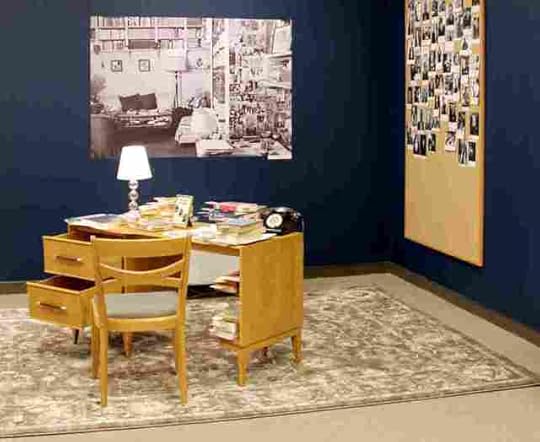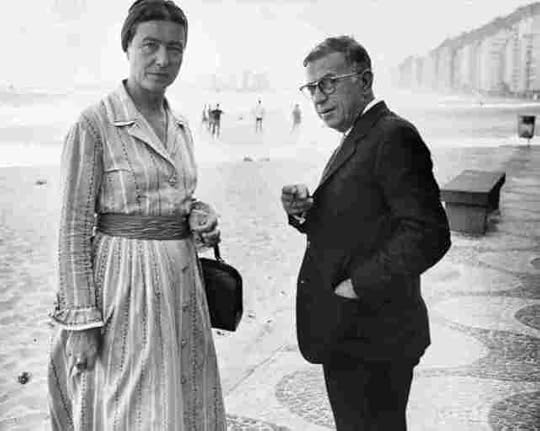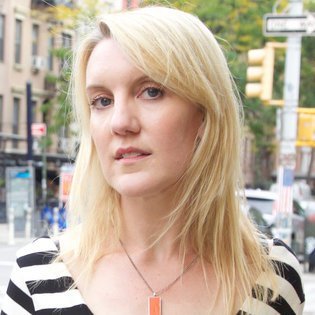Roy Miller's Blog, page 188
May 17, 2017
Barris Out, Souza In at BookExpo Adult Breakfast
This content was originally published by on 16 May 2017 | 4:00 am.
Source link
Presidential photographer Pete Souza will replace Kenya Barris as a speaker at BookExpo’s Adult Book & Author Breakfast. The switch was made after the pub date for Barris’s ‘This Is Basic Sh*t’ was moved from this fall to spring 2018.
Source link
The post Barris Out, Souza In at BookExpo Adult Breakfast appeared first on Art of Conversation.
Kareem Abdul-Jabbar Reflects On A Life-Altering Friendship
This content was originally published by on 16 May 2017 | 3:06 pm.
Source link
NBA legend Kareem Abdul-Jabbar on his 50-year relationship with his coach John Wooden, how he shaped his life and career.
(Image credit: Photo by Dimitrios Kambouris/Getty Images)
The post Kareem Abdul-Jabbar Reflects On A Life-Altering Friendship appeared first on Art of Conversation.
May 16, 2017
Why I Joined Reedsy’s #IWriteBecause Campaign—And You Should Too
This content was originally published by Brian A. Klems on 16 May 2017 | 2:08 pm.
Source link
I’ve been writing since I was a kid.
I spent hours reimagining stories for my American Girl dolls (spelled out in 80-page Word documents). I went through a poetry phase where I penned exclusively weather-themed prose (my mother has the scrapbooks to prove it). In college I wrote for a sports blog about baseball (I knew—and still know—nothing about the sport) and a handful of current events articles for the student newspaper. In the years since, I’ve written about everything from weddings to professional tree climbers to (yes) writing.
But, if you’re like me, what’s more intriguing than hearing someone’s literary resume is discovering why they write. One of my favorite things about working at Writer’s Digest is getting to hear other authors’ why, and also, their how: How did words they’ve read encourage them to finish a novel, to persevere past rejection, or to see the world a little differently? How did that spur them to do the same in kind with their own writing? Everyone has their own reasons for writing, and those are as varied and unique as we are individually. For me, and the rest of us at WD, writing is a way to give back. It’s a way to share knowledge, to share truth, to share stories; to learn, to inspire, to encourage each other.
WRITE BETTER NOW BY DOWNLOADING WRITER’S DIGEST!
Know why you write, but want to improve on how you write? Check out the latest issue of Writer’s Digest, North America’s leading publication for writers, here.
Which is why, when I heard about Reedsy’s #IWriteBecause campaign, a video project giving writers a platform to explain why they do what they do—and give back during the process—I had to share it with you all. For every author video submitted, Reedsy will donate $10 to Room to Read, a nonprofit foundation that focuses on literary acquisition and girls’ education in Africa and Asia that has benefited more than 10 million children in a dozen countries. All of us who write (and read) know the inestimable value of being able to do so—and I believe that any way that we can share that with others is something to strive toward.
My video about why I write is below, but I want to know: Why do you write? For more information about the campaign, visit Reedsy here: https://blog.reedsy.com/announcing-iwritebecause. To join, go to https://blog.reedsy.com/iwritebecause, while info about Room to Read can be found here: https://www.roomtoread.org/.
 Baihley Grandison is the associate editor of Writer’s Digest and a freelance writer. Follow her on Twitter @baihleyg, where she mostly tweets about writing (Team Oxford Comma!), food (HUMMUS FOR PRESIDENT, PEOPLE), and Random Conversations With Her Mother
Baihley Grandison is the associate editor of Writer’s Digest and a freelance writer. Follow her on Twitter @baihleyg, where she mostly tweets about writing (Team Oxford Comma!), food (HUMMUS FOR PRESIDENT, PEOPLE), and Random Conversations With Her Mother
You might also like:
The post Why I Joined Reedsy’s #IWriteBecause Campaign—And You Should Too appeared first on Art of Conversation.
Scott Turow’s New Thriller Investigates a Massacre in Bosnia
This content was originally published by BEN MACINTYRE on 16 May 2017 | 8:29 pm.
Source link
The Roma were some of the least recognized victims of the Bosnian war, reviled and misunderstood by all sides, as they have been throughout history. In 2004, Boom learns, 400 Roma men, women and children were rounded up by masked gunmen in the middle of the night, trucked to a large cave and then, according to a lone survivor, buried alive. Who killed them? Serb paramilitaries? Islamist jihadis? The Bosnian mafia? Or was this the work of United States forces, carrying out a revenge attack after the Gypsies tipped off the fugitive Serb leader to an impending raid in which several American servicemen were killed? Teasing out the complexities and actors in the conflict requires considerable scene-setting and throat-clearing. “Do you know where Bosnia is?” Boom is asked at the outset. “East of anyplace I’ve been” is the reply.
Photo
Once Turow has taken us through the warring parties, the Dayton Accords that ended the fighting in 1995, the NATO forces deployed to enforce it and America’s refusal to participate in the I.C.C., we are off, at a speed that becomes faster and more assured as the novel progresses. There is a particularly fine scene in which Boom finds himself kidnapped by Serb paramilitary thugs, dragged to the top of a salt factory tower and attached by his neck to a colleague, a boozy Belgian who speaks antique Australian argot. If either man moves he will fall off and hang both of them. Boom, believably, wets himself.
Turow successfully recreates the roiling uncertainty of the Bosnian conflict and its consequences, the stew of racism, military aggression and crime, the willingness of ordinary people to visit spectacular cruelty on their neighbors in obedience to ethnic enmities centuries old. Central to his plot is Laza Kajevic, the fugitive Bosnian Serb leader suspected of unleashing his men on the Roma. Despite his disclaimer that “no character is a representation of anyone who has lived,” Kajevic is plainly modeled on the real Karadzic, from his elaborate coiffure to his towering arrogance and blithe brutality. I had the chilling experience of meeting Karadzic during one of his visits to the United Nations, and Turow has captured his strange menace, his “gargantuan self-importance” and “serene willingness to be both judge and executioner.”
Continue reading the main story
The scene shifts back and forth from the killing fields of Bosnia to the quiet bourgeois certainties of the Netherlands, but Turow seems less comfortable on foreign soil than in the familiar surroundings of his fictional Kindle County. In Bosnia he sees “little whitewashed houses that could have been home to Hansel and Gretel”; a building in The Hague is “reminiscent of Disneyland.”
Helping Boom in his investigations is Esma Czarni, a Cambridge-educated barrister, Roma advocate and Gypsy sexpot, with “a great mass of fried-up black hair, … huge, imposing black eyes” and a shapely bosom. “I realized that at some level I had known what was going to happen,” Boom says. So does the reader. “‘Allow yourself, Bill,’ she murmured. … ‘Prepare for paradise.’” And sure enough, he does, falling into an “earthquake of pleasure.” This is pretty harrowing stuff, but thankfully fairly short-lived.
Continue reading the main story
“Testimony” lacks the tautness of Turow’s earlier legal thrillers, and one senses a midlife author attempting, like his midlife character, to find meaning and resolution, and “bring justice to the millions in several nations murdered, tortured, raped, starved and savagely misled” in the course of the Bosnian conflict. This book does not wear its research lightly and tends to inform the reader, a little ponderously, when a lecture is about to begin: “How much pathology you familiar with, Boom?” Then again, few other writers would be prepared to explore the so-called Hague Invasion Act, or have a character declare: “The Service-Members’ Protection Act prohibits any American assistance in an I.C.C. investigation.”
Continue reading the main story
The Bosnian war erupted from a complex concatenation of hatreds. There was savagery by all, and incompetence on the part of the U.N. and NATO. The Roma, as ever, were caught up in the violence. Hundreds of thousands of confiscated arms were shipped from Bosnia to Iraq. What happened to those weapons has never been fully explained, providing the hinge to Turow’s plot.
The Bosnian slaughter offered no easy moral conclusions, and to his credit Turow does not suggest any. “I do not know … what I would do in wartime,” one character observes, reflecting on the horrors of the war. “I am not sure the rules would be very clear to me if it were kill or be killed.” That is true of most people in wartime, in every age.
Continue reading the main story
This is at once a thriller, a story of middle-aged angst, an exposition of international law and an exploration of an intensely serious and very nasty episode in recent history. Like the international court’s attempts to bring retrospective justice to Bosnia, it is imperfect and occasionally confusing, but also admirable and important.
Continue reading the main story
The post Scott Turow’s New Thriller Investigates a Massacre in Bosnia appeared first on Art of Conversation.
Photo Mania: Toronto Comic Arts Festival 2017
This content was originally published by on 16 May 2017 | 4:00 am.
Source link
Organized by the Toronto Public Library in partnership with The Beguiling comics bookstore, The Toronto Comic Arts Festival was held May 13-14 at the Toronto Reference Library, a sprawling public facility in downtown Toronto. PW was on hand to bring back images of the artists, publishers and fans and events at this year’s festival.
Source link
The post Photo Mania: Toronto Comic Arts Festival 2017 appeared first on Art of Conversation.
Imagine What It Was Like To Sit Down At Simone De Beauvoir’s Desk : NPR
This content was originally published by Susan Stamberg on 16 May 2017 | 8:55 am.
Source link
Simone de Beauvoir in her studio, rue Schoelcher 12 bis, Montparnasse, Paris, March 1986.
Bettina Flitner/National Museum of Women in the Arts
hide caption
toggle caption
Bettina Flitner/National Museum of Women in the Arts
[image error]
Simone de Beauvoir in her studio, rue Schoelcher 12 bis, Montparnasse, Paris, March 1986.
Bettina Flitner/National Museum of Women in the Arts
Intellectual, philosophical, literary, rebellious, Simone de Beauvoir spoke a mile a minute, and wrote quickly, too — novels, essays, a play, four memoirs. She was an atheist, bisexual, pioneer feminist, and her longtime lover, Jean-Paul Sartre, wrote the book on Existentialism. When she died in 1986 she was world-famous — now the National Museum of Women in the Arts in Washington, D.C., is saluting her again.
De Beauvoir wanted to be a nun when she was little, but by her teenage years, she had decided to become a writer; it was what she wanted most in the world, she told a young friend.
De Beauvoir wrote like a scribe, according to museum library director Sarah Osborne Bender. She points out two small piles of graph paper — the kind French students use to discipline their handwriting. They contain an early draft of de Beauvoir’s best-known book, The Second Sex, a 1949 feminist treatise on what it means to be a woman.

An early longhand manuscript of de Beauvoir’s The Second Sex.
Emily Haight/National Museum of Women in the Arts
hide caption
toggle caption
Emily Haight/National Museum of Women in the Arts
[image error]
An early longhand manuscript of de Beauvoir’s The Second Sex.
Emily Haight/National Museum of Women in the Arts
“When she finally decided that she was going to write this, the ideas just poured from her,” Osborne Bender says.
You can see it on these pages — she wrote in longhand, the words marching steadily across the paper, only two small crossouts.
This manuscript is the only original object in the exhibit. “From the Desk of Simone de Beauvoir” is a cozy assemblage of objects that could have been in her Paris apartment — desk, lamp, bookcases.

“From the Desk of Simone de Beauvoir” invites visitors to sit down and explore a replica of the French feminist’s desk.
Emily Haight/National Museum of Women in the Arts
hide caption
toggle caption
Emily Haight/National Museum of Women in the Arts
[image error]
“From the Desk of Simone de Beauvoir” invites visitors to sit down and explore a replica of the French feminist’s desk.
Emily Haight/National Museum of Women in the Arts
“Her apartment was cluttered, her desk was covered, her bookshelves were packed,” Osborne Bender says.
Black and white photographs in the installation show the philosopher at home. You can also see snapshots de Beauvoir tacked to her walls — pictures of travels, loved ones, friends she referred to as “the family,” and, occasionally a movie star.
It’s a real intellectual’s apartment — the digs of someone who spent time reading, writing and thinking. An end table holds some travel tchotchkes and a cast of Sartre’s hands. Sartre was a Nobel Prize-winning writer, philosopher and existentialist. He and de Beauvoir had a lifelong virtual marriage of intellect, opinions, ambitions, intense conversation and Deux Magots coffee. It was an open relationship — no wedding license, no children and various lovers on the side.

De Beauvoir and Jean-Paul Sartre are shown above at Copacabana Beach, circa 1960.
STF/AFP/Getty Images
hide caption
toggle caption
STF/AFP/Getty Images
[image error]
De Beauvoir and Jean-Paul Sartre are shown above at Copacabana Beach, circa 1960.
STF/AFP/Getty Images
De Beauvoir’s deepest focus was feminism — existing as a woman in a man’s world. “Being a woman was not a problem for me,” she said.
But she found it was a problem for many women. Brilliant, confident and outspoken, she interviewed dozens of women about their lives, and analyzed their answers in The Second Sex. Decades before Betty Friedan, Gloria Steinem and Ms. Magazine, de Beauvoir declared: “One is not born, but rather becomes, a woman.” It’s society that makes women second-rate, acquiescent, oppressed.

In the late 1960s, when women in France and the U.S. became activists for equality, de Beauvoir agreed with their goals. “They needed to take their issues into their own hands,” Osborne Bender says. “They couldn’t wait for men to invite them into the fold. If they wanted change and wanted their own place, they needed to make it.”
Plenty has changed for women since de Beauvoir’s lifetime, but Osborne Bender finds 21st century women still turn to the 20th-century feminist icon for inspiration.

“I was amazed at the presence she had in popular culture,” Bender says. “If you search Simone de Beauvoir on Twitter or Instagram, the daily volume of content — her quotes, pictures of her, people saying they’re reading her for a university class — every day there’s content about her.”
The de Beauvoir installation will remain at the Museum of Women in the Arts until August 12.
“She really holds a place,” says Osborne Bender. “She’s a very modern woman.”
The post Imagine What It Was Like To Sit Down At Simone De Beauvoir’s Desk : NPR appeared first on Art of Conversation.
Job Swap | WritersDigest.com
This content was originally published by Brian A. Klems on 16 May 2017 | 4:00 pm.
Source link
Take a character from one of your stories and place them into your current job. How does the office respond? Do they do a good job filling your place, or are they all play and no work?
Post your response (500 words or fewer) in the comments below.
Download from our shop right now!
You might also like:
CATEGORIES
Creative Writing Prompts
The post Job Swap | WritersDigest.com appeared first on Art of Conversation.
What’s New in the Supermarket? A Lot, and Not All of It Good
This content was originally published by STEPHANIE STROM on 16 May 2017 | 9:27 pm.
Source link
Mr. Ruhlman is the author of several books, most of them about cooking and chefs. He loves grocery stores and rarely passes up the chance to check out an unfamiliar one. It’s a predilection he ascribes to his father, Rip Ruhlman, who did the food shopping for the family and who makes frequent appearances in his son’s latest book, “Grocery: The Buying and Selling of Food in America” (Abrams).
Continue reading the main story
“He would gladly deposit a few Rock Cornish game hens (a new offering, bred by Donald Tyson in 1965) into the metal shopping cart, with its one wobbly wheel, and eventually, a box of Uncle Ben’s wild rice for my mother, who loved to roast the hens stuffed with it,” Mr. Ruhlman writes of his father’s voracious appetite for anything new in the grocery store.
But while the ever-expanding supermarkets that his father shopped still exist — this suburban ShopRite 13 miles from Manhattan is a prime example, selling a wide array of items, from deli cuts and 11 varieties of Cheerios to mops and ironing board covers — they are in the midst of an existential crisis.
Shoppers are increasingly shunning the processed, packaged products that fill most of the shelves in the center of the store. Instead, they are hunting the perimeter for fresh fruits and vegetables, yogurts and cheeses, and prepared foods that go way beyond the traditional rotisserie chicken.
Continue reading the main story
Competition is fierce, as retailers like Walmart, Target and 7-Eleven sell groceries, and Amazon and Fresh Direct deliver to the doorstep. Many of the hottest brands sell directly to consumers through websites and subscription services, cutting out stores altogether.
Continue reading the main story
Walmart, long the lowest-price grocery option, recently announced that it would offer even lower prices, a response to the growth of sharp-penciled European competitors like Aldi and Lidl. And Whole Foods Market, once the darling of the industry, has struggled over the past few years as traditional grocers like Kroger and Safeway have added organic products and upgraded their produce departments.
Continue reading the main story
Nielsen, a research and consulting firm, said last month that for the first time in a decade, shoppers were making more trips to stores, but coming out with less in their baskets. “They’re not stockpiling their pantries as much,” said Jordan Rost, the company’s vice president for consumer insights. “They’re really buying more fresh produce and prepared meals.”
None of this comes as a surprise to Mr. Ruhlman, 53, who grew up in the Cleveland area and just moved to Manhattan to join the novelist Ann Hood, whom he married last month. His new book is as much an indictment of the traditional supermarket’s role in American unhealthiness as it is about the evolution of the model.
“Our food is making us sick,” he said. “Here we have candy bars masquerading as cereal bars — no wonder we’re confused by our food.”
Continue reading the main story
He picked up a Special K Caramel Coconut Chewy Snack Bar. “You think Special K is healthy because it tastes so bad,” Mr. Ruhlman said. “But one of these has seven grams of sugar in it, meaning it’s 25 percent sugar.”
Continue reading the main story
That brought us to the cereal aisle, which Mr. Ruhlman considers the worst in the grocery store; one chapter in his book is titled “Breakfast: The Most Dangerous Meal of the Day.”
Photo
Mr. Ruhlman considers the cereal aisle the worst in the grocery store. “Cereal has this healthy halo around it, and it’s anything but healthy,” he said.
Credit
Bryan Anselm for The New York Times
“Cereal has this healthy halo around it, and it’s anything but healthy,” he said. Much of it is what he calls “stripped carbs,” or rice, wheat and oats from which manufacturers have removed the germ and bran because the oils in them would go rancid sitting for months on the grocery shelves.
Continue reading the main story
“Our bodies convert those simple carbohydrates into sugar, and guess what most of the rest of cereal is?” he said. “Sugar, either as sugar or corn syrup or fructose or sucrose or some other sugar derivative.”
A few aisles over, Perfect Size for One, a new Duncan Hines mix that makes a single cupcake in a mug using a microwave, caught his eye, first for its sugar content (35 grams) and then as an example of how supermarkets are trying to reach younger consumers. “And it’s not just millennials — more and more of what gets bought in the supermarket is convenience,” Mr. Ruhlman said. “We’re grab-and-go eaters.”
Mr. Ruhlman pointed to another example, Bumble Bee’s new single-serving tuna in pouches, which come in sriracha, sun-dried tomato and basil, and spicy Thai chile varieties, among others.
Continue reading the main story
“I wonder how you eat this,” he said. “I mean, they do provide a spoon. But who eats tuna with a spoon?”
Beneath nearly every product on these shelves was a label promising a deal: buy one, get one free; 10 for $10. But such enticements no longer have much impact, according to Nielsen, which found that consumer response to them fell 5.3 percent over the past three years.
Continue reading the main story
The growing sales of produce and prepared foods are a silver lining for supermarkets, which make a much higher profit margin from produce — about 40 percent for prepared foods, compared with about 20 percent in the store over all, said Phil Lempert, the grocery-retailing expert who calls himself the Supermarket Guru.
Continue reading the main story
But grocers still face a quandary: how to maintain a huge store whose center is filled with items that are largely out of step with how we eat today, yet are a steady source of slotting fees (to secure the best spots in the store when a product is introduced) and other payments from the companies that produce them.
Mr. Ruhlman is as baffled as anyone else about how to make that system work, and Nielsen recently created a group to study the issue. He is sure, though, that a fix is needed. The ShopRite here probably has to ring up at least $750,000 in sales each week to justify its space, he said, “and I just don’t know how you make money here.”
Continue reading the main story
The owner, Vincent LoCurcio, whose grandfather opened the Nutley store with a business partner in 1953, declined to divulge sales figures. He acknowledged that the floor plan of the Nutley store was traditional, but said it was stocked with “modern offerings.” He also noted that customers can shop online and through the ShopRite mobile app, and pick the orders up at the store or have them delivered.
Continue reading the main story
“What’s unique is that we are family-owned, and we deliver a personalized experience in each of our stores,” Mr. LoCurcio said. “It’s hard to find a place where people still know you by name, but we do know many of our customers by name and that’s an important experience we provide for them.”
Mr. Ruhlman and I toured the frozen foods section and then, as a test of how up-to-date this ShopRite was, went on a search for kombucha. We had to ask an employee, who at first had trouble understanding what we were looking for. But there it was, a small selection of kombucha drinks in a refrigerated section near juice.
Continue reading the main story
Finally, at the other end of the store, we found ourselves in the prepared foods section. “Typical 1970s salad bar,” Mr. Ruhlman said, “but a nice fish section.” (Nutley’s sizable Asian population may help explain the store’s superior seafood selection and unusual fruits and vegetables. More than two-thirds of the town’s residents, though, are 35 or older and white.)
Mr. Ruhlman predicts that much of what is sold in the center of the store — the cereal, canned soups, detergents and Ziploc bags — will be largely bought online in the not-too-distant future as food shoppers become more accustomed to e-commerce.
To repurpose their acres of space, he says, supermarkets could develop specialties that make them more competitive. He pointed to Kroger’s acquisition this year of Murray’s Cheese, a New York institution. “Think about what that could mean in terms of more people having access to really good cheeses,” he said.
And he believes that many supermarkets will simply get smaller, as people order more online and consumers buy groceries from more places.
Continue reading the main story
For him, the supermarket has lost some of the thrill it once held when he strolled each aisle with his dad. “It just doesn’t have a lot of the stuff that I personally like,” Mr. Ruhlman said. “And it takes too long to get around. I’m exhausted.”
Correction: May 16, 2017
An earlier version of this article misstated the surname of the vice president for consumer insights at Nielsen. He is Jordan Rost, not Ross.
Continue reading the main story
The post What’s New in the Supermarket? A Lot, and Not All of It Good appeared first on Art of Conversation.
For Better, for Worse: Three Memoirs Report From Marriage Country
This content was originally published by HEATHER HAVRILESKY on 16 May 2017 | 9:00 am.
Source link
Such brutal honesty is the bread and butter of the marriage memoir, yet Shapiro still manages to make her husband sound quirky and tenacious in the manner of the best romantic comedy leads. And her prose has a way of making even mundane disappointments feel portentous and universal, if a little melodramatic: “I’ll take care of it, M. said. A familiar refrain, one I have always loved and longed to believe. … The creaky house, the velocity of time, the accretion of sorrow. The things that can and cannot be fixed. I’ll take care of it.” But M. does not seem to be taking care of it. He spends six months writing a TV pilot that might never get made, and the couple have no savings and no retirement plan.
Photo
This is where the record scratches to a halt. Shapiro is 52 and her husband is 59; they live in what sounds like a big house in “the wilds of Connecticut”; they founded a writers’ conference in Italy; they fly to the West Coast to have lunches with studio executives. Yet they don’t have a cent saved for retirement? Suddenly the title “Hourglass” seems less apt than, say, “Time Bomb.” The nostalgic tone feels less freewheeling and poetic than dark and suspenseful now. Even the charming son who is “funny and kind” and has a “vast network of friends” can’t lighten the mood, nor can the vague musing (“How do you suppose time works?”), or the scattered reflections on unexpected misfortune (“Where does hope go when it vanishes? Does it live in a place where it attaches itself to other lost hopes?”), or even the weighty-sounding but abstract quotations (“‘A mosaic,’ writes Terry Tempest Williams, ‘is a conversation between what is broken’”).
To Shapiro’s credit, by the end of her short book, we want to know what will happen next — but we come away with more philosophical musing instead. “Time is like a tall building made of playing cards,” she tells us, meaning we’re all in this crazy, unpredictable mess together. But we’re not quite buying it. “Use sturdier building materials!” we want to tell her. Then again, maybe this is the true lure of the marriage memoir: We are gathered here today to witness a two-person catastrophe in motion, a leap of faith that ends, at least half of the time, in a cloud of dust at the bottom of a tall cliff.
Photo
 Ada Calhoun
Ada CalhounCredit
Jena Cumbo
In “Wedding Toasts I’ll Never Give,” Ada Calhoun takes a much more lighthearted approach to the toils and snares of marriage in the hazy light of midlife. Springing from a New York Times Modern Love column, Calhoun’s memoir reads like a series of light and funny essays, formed from original, engrossing anecdotes interspersed with somewhat more predictable life lessons. Calhoun and her husband have been married since they were in their 20s, and she writes, “I sometimes wonder what it would be like to be single again.” When their son was a toddler, her husband confessed that he had feelings for another woman. Later, Calhoun had a brief dalliance with a handsome colleague while she was out of town on a book tour. Even so, the stakes never feel that high: The couple decide together that seeing other people is a bad idea. In spite of his own brief emotional entanglement, her husband comes across as a charming weirdo who seems just as willing to own his blind spots and weaknesses as she does.
Continue reading the main story
Calhoun offers marital anecdotes rich with the alternating warmth and pathos that typify a long-lasting union: When her husband discovers her on the floor sorting Playmobil pieces from Legos and asks “What are you doing?” Calhoun memorably replies, “A dramatization of why there are no Great American Novels by women.” But her attempts to summarize the eternal themes of marriage present a jarring change in tone, one that constitutes the book’s weakest passages. It’s as if every time we downshift from the delightfully odd specifics of Calhoun’s family life to the sweeping, perfume-infused inquiries of lady magazines (“How might we learn to appreciate our spouse’s quirks in the moment?”), a little angel trades in its tramp stamp for a waffle iron. But considering the fact that wedding toasts are either surprisingly moving or hopelessly dull, it probably makes sense that Calhoun’s extended paean to marriage is a little bit of both.
Continue reading the main story
In her memoir of “midlife reckoning” called “Love and Trouble,” Claire Dederer sidesteps both theatrical prose and broad clichés in favor of frank and colorful admissions of impatience, lust and guilt. Maybe because Dederer never tries to sweeten her suffering with sentimentality, it feels less onerous to ride sidesaddle on her journey through the barren flats of holy matrimony. Dederer’s midlife struggle is also less focused on disappointment or frustration than it is on her own shifting identity: She feels older but still wants to be ravished. She feels liberated from outdated expectations of herself but still wants more excitement in her life. And alarmingly enough, work doesn’t provide the same refuge it once did. “A new inertia has overcome you,” she writes. “You are shaken and insecure, and simultaneously enervated.” Dederer is struggling with an odd mix of writer’s block, midlife crisis and sexual reawakening.
Photo
 Claire Dederer
Claire DedererCredit
Jenny Jimenez
But just as a potential affair seems to present itself, Dederer swerves into an extended reminiscence of her reckless formative years as a sexual conquistador. These pages are more detailed than expected, and include, among other things, an elaborate map of the Seattle cool-kid hangouts from her high school years (“all the dishwashers at Pizza Haven were heavy metal guitarists”); a recollection of her first serious boyfriend, who had “floppy Steve Prefontaine hair” and manual techniques that left much to be desired; and a veritable laundry list of drugs taken, sexually transmitted diseases treated, and attempts at achieving True Lust thwarted. Dederer’s comical, erratic storytelling is nuanced and unpredictable, dwelling on the recklessness of youth without ever selling short the courage and daring it took to be so reckless. She brings all of the arrogance and longing of early sexual exploration to vivid life with real empathy and verve.
Continue reading the main story
But there’s darkness in the mix, here, too: After her mother’s adult male friend climbs into her sleeping bag when she is 13 years old, her understanding of her own desire is muddled irreparably. This explains why we’re offered not one but two chapters that are open letters to Roman Polanski, an indulgence we might be more willing to endure if the book’s initial seduction weren’t dropped and never revisited, while another encounter in a hotel — which serves as a kind of climax to her crisis — remains unnervingly vague: “A man slips into the room with me before I can stop him.” Wait — who is this stranger? Is this an assault? She never explains.
Instead, Dederer offers up a chapter analyzing the reasons for her sexual proclivities. “My agent wanted an answer, so I did this: I traced my hypersexuality back to an incident. It’s because Jack Wolf got in the ol’ sleeping baggerino in 1980.” The odd use of cute language (baggerino?) seems like an attempt to evade her discomfort with the subject at hand. Even so, Dederer leans in — way in — with an extended analysis of her desire to be dominated in bed: “Whether I like it or not, as I grow older and lose my beauty, I also lose the opportunity to be victimized in the particular way I crave and fear.”
Dederer is an excellent writer who spins her prose with the casual grace and easy humor of a seasoned professional (she has been a critic and journalist for years and wrote the best-selling 2012 memoir “Poser: My Life in Twenty-Three Yoga Poses”). Yet by the end of the book, her strange, nonlinear tour ends up feeling a little rushed and incomplete. We don’t get to peek behind the curtains that are central to the story (Who is this mystery lover — or is he an attacker?) yet we’re invited to ruminate on Roman Polanski’s past at length, analyze Dederer’s libido in uncomfortable ways, hear her agent’s questionable directives, and learn that her husband wants her to hurry up and finish it so she can get paid (“Sell a book, he said. I’m going as fast as I can, I said”). As brazenly honest as these passages might be, perhaps they suggest that in a marriage memoir — as in marriage itself — total honesty is at once necessary and the biggest liability of all.
Continue reading the main story
The post For Better, for Worse: Three Memoirs Report From Marriage Country appeared first on Art of Conversation.
The Free-Wheeling Style Of Art Ensemble of Chicago Shines In ‘Message to Our Folks’ : NPR
This content was originally published by Kevin Whitehead on 15 May 2017 | 5:31 pm.
Source link
Message to Our Folks
The Art Ensemble of Chicago
Hardcover, 346 pages |
close overlay
Buy Featured Book
Title
Message to Our Folks
Subtitle
The Art Ensemble of Chicago
Author
Paul Steinbeck
Your purchase helps support NPR programming. How?
Amazon
Independent Booksellers
Paul Steinbeck’s new book chronicles the antics, both on and off stage, of the storied jazz ensemble. Critic Kevin Whitehead says Message to Our Folks celebrates the band’s success on their own terms.
The post The Free-Wheeling Style Of Art Ensemble of Chicago Shines In ‘Message to Our Folks’ : NPR appeared first on Art of Conversation.



